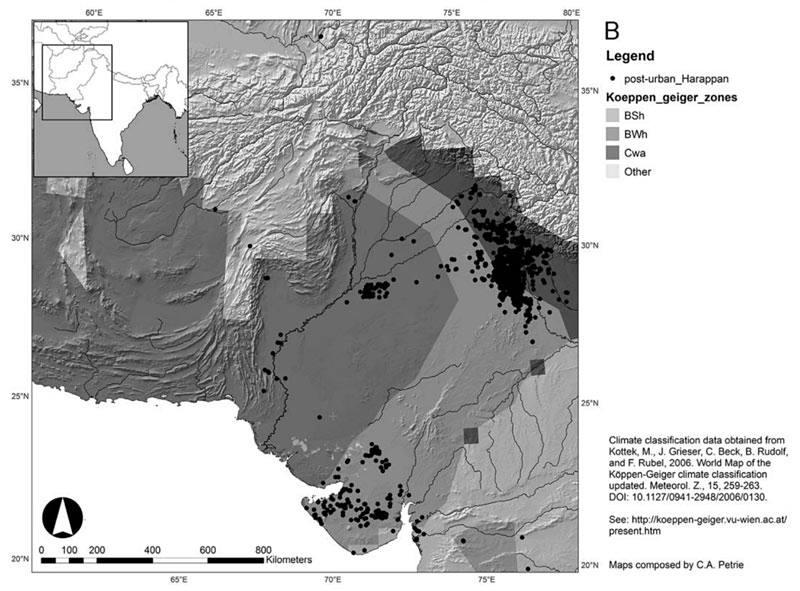
Asked by Monu
Mayank Vahia
This question is a landmine and whatever I say will be challenged by someone. Let me list some issues. There was clearly a dried up riverbed between Indus and the Central India which is now a small seasonal river called Ghaggar in India and Hakra in Pakistan. Many IVC sites are along this river bed.
Rig Veda (the oldest of Vedas) mentions a river which coincides with the region in general and they call it Saraswati. However, we have no clue as to what the IVC people called it.
The problem between associating IVC and Vedic Civilisation boils down to 2 problems. Vedas swear by the horse (with 27 ribs and all) while Harappans only know of wild asses (26 ribs) and no more. There are no horse bones, drawings or even toys of horse borne carts – there are bullock carts though.
The second question is that Vedic literature discusses an entirely nomadic life and there are no fixed places of stay or worship. Harappans were highly urbanised for almost a thousand years. If IVC practiced any religion, then there is very little evidence. So the connection is not obvious.
Having said this, there are some well-made, well preserved seals in IVC which appear to represent one of the great gods of Hinduism – Shiva. Shiva is a very interesting god – he is the lord of animals (Pashupati), is an intellectual and short on temper. In many ways he is different in temperament than other gods of Vedic period. The others (Vishnu, Indra and Bramha) also have some connectivity with the Avetha of Iran from where the Vedic people presumably came. Hence it can be argued, with some merit, that Shiva was a IVC god assimilated in the Hindu Pantheon when the Vedic people came to India towards the podt urban declining phase of IVC when the cities had been abandoned. That is the closest you have, to a synthesis of data but the subtleties can be argued ad infinitum. However, every statement in this response can be questioned.
Above: Distribution of urban-phase Indus settlements (B) and their relationship to Global Köeppen-Geiger Climate Classification Zones., courtesy Adaptation to Variable Environments, Resilience to Climate Change
